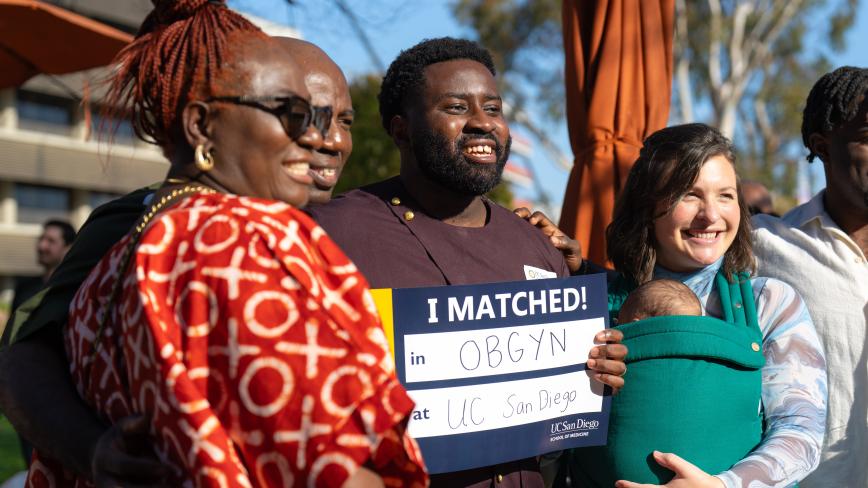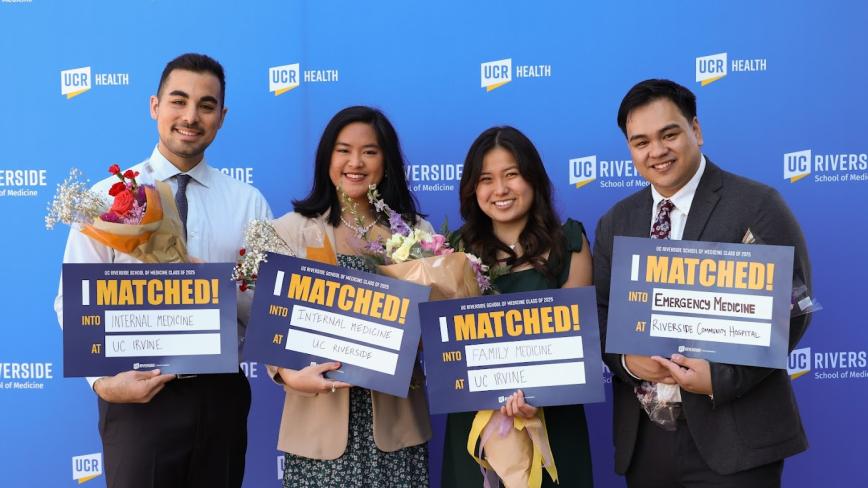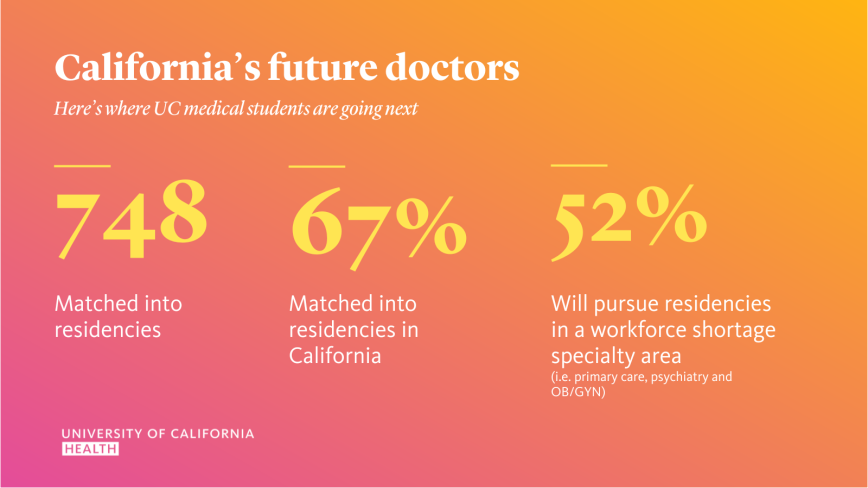California’s health care workforce just got bigger.
On Friday, March 21, 2025, hundreds of University of California medical students discovered where they will continue their graduate medical education as they move on to the next phase of their training.
Match Day culminates a months-long interview and application process. Every year, students gather with family and friends to find out the next chapter in their journey to becoming a licensed medical doctor.
A match made in California
This year, 748 University of California soon-to-be medical school graduates found out where they will continue to learn and practice for the next three to seven years. Sixty-seven percent of the UC-trained medical students will remain in the state, serving California patients, including in communities with some of the greatest need for doctors.
UC-trained medical students remaining in California to provide care isn’t new. In fact, recent years have shown that nearly 70 percent of UC medical school graduates go on to practice as licensed physicians in California – giving the Golden State the highest physician retention rate in the nation.
Addressing California’s physician workforce challenges
In the next phase of their professional training, UC medical school graduates will pursue clinical experiences in residencies lasting 3-7 years.
Over half (52 percent) of these future doctors will go on to train in areas experiencing health care shortages – including primary care, OB/GYN and psychiatry.
Primary care—encompassing fields such as family medicine, internal medicine, and pediatrics—is a large and crucial part of California’s health care system, and doctors in the field are in great demand. The Association of American Medical Colleges projects a national shortage of 20,200 to 40,400 primary care doctors by 2036.
This year, 35 percent of UC-trained physicians will pursue primary care, with 27 percent entering primary care specialties across California's health systems.
Additionally, California faces demand for physicians in specialties such as OB/GYN and psychiatry, and 115 UC medical students will go on to train in these areas and help address this health care workforce need.
“We are excited to celebrate the achievements of our graduating medical students on this year’s Match Day. With a growing shortage of primary care physicians, psychiatrists and OB/GYNs, UC-trained medical students are stepping up to meet the demand, with many choosing to enter this critical field and serve communities across California. I am proud that so many will continue their training here in California.” - Deena Shin McRae, M.D., UC Health associate vice president for Academic Health Sciences
From primary care to PRIME
The future physicians graduating from medical schools on six UC campuses—UC Davis, UC Irvine, UC Riverside, UCLA, UC San Diego and UCSF—include 72 students participating in Match Day who have completed one of the UC Programs in Medical Education (UC PRIME).
UC PRIME programming at each campus targets a specific community’s needs, from improving rural health care access to serving African, Black and Caribbean, Indigenous, Latino or urban populations. Seventy-six percent of this year’s UC PRIME matching graduates will remain in California for residency training, and nearly 40 percent will train in primary care in California.
For many students, Match Day doesn’t mean the end of their journey at UC. UC-sponsored residency and affiliated family medicine programs provide close to 40 percent of residency training positions in the state, and this year, forty percent of UC medical students this year will go on to continue their residencies at UC locations.
About University of California Health
University of California Health comprises six academic health centers, 21 health professional schools, a Global Health Institute and systemwide services that improve the health of patients and the University’s students, faculty and employees. All of UC’s hospitals are ranked among the best in California and its medical schools and health professional schools are nationally ranked in their respective areas.



